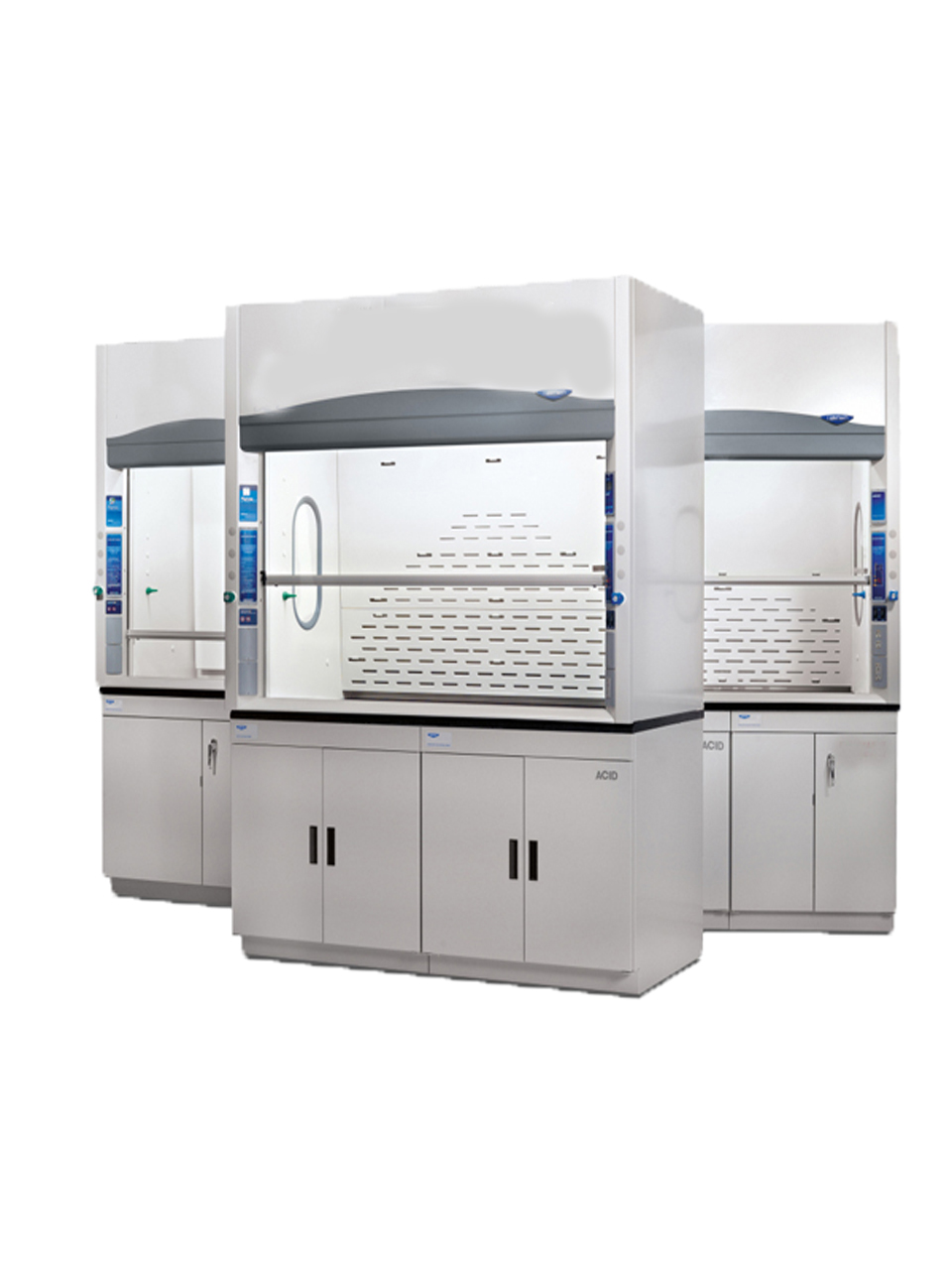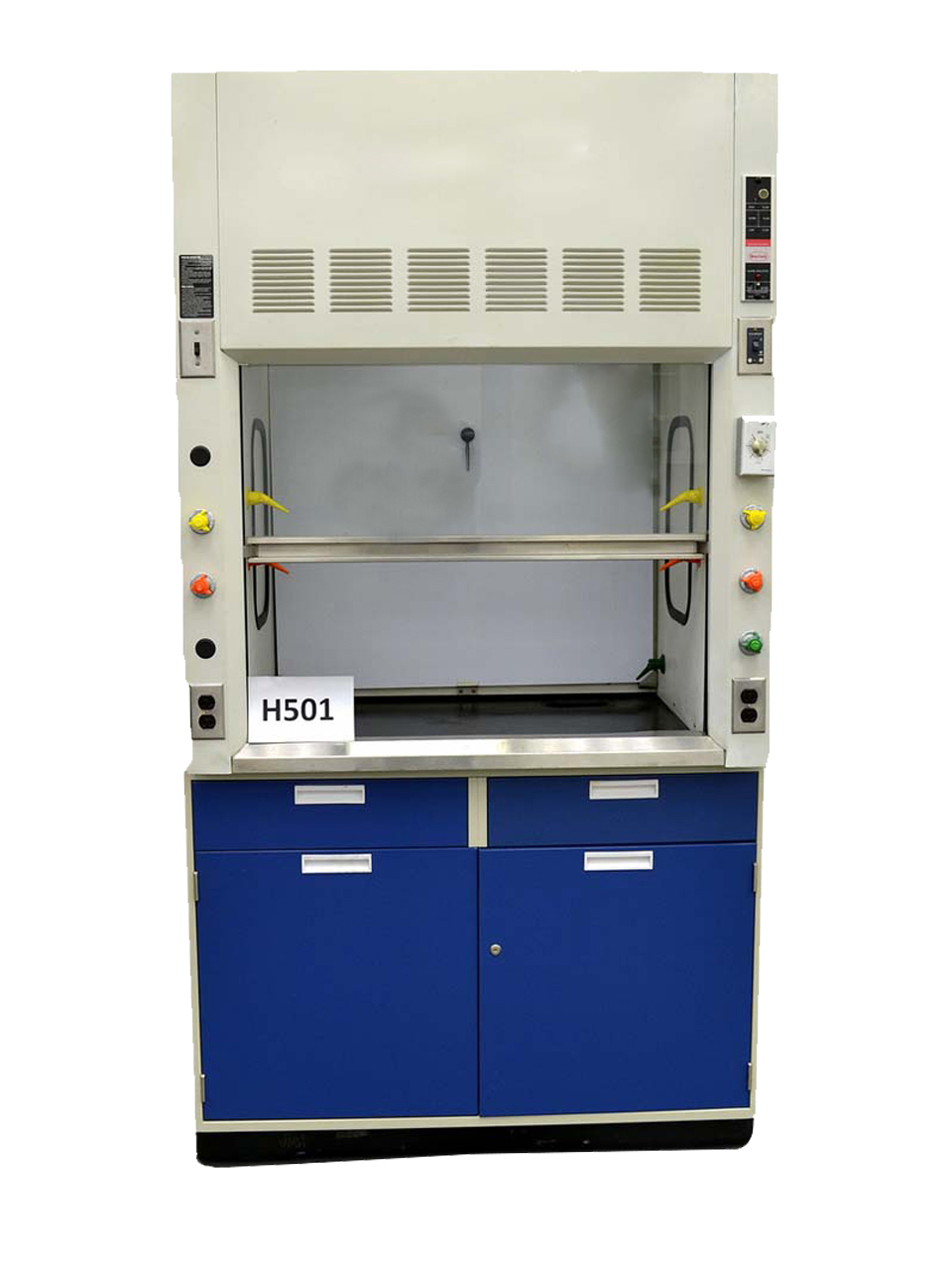
A fume hood is a ventilated enclosure in which gases, vapors and fumes are contained. An exhaust fan situated on the top of the laboratory building pulls air and airborne contaminants through connected ductwork and exhausts them to the atmosphere.Purpose. Chemical fume hoods, when used properly, are one of the most reliable engineering controls in the laboratory. They protect workers by: Containing vapors, dusts, gases, and fumes generated within the hood, and removing them as air flows into the hood and then out via the laboratory exhaust system.
Fume hoods are generally set back against the walls and are often fitted with infills above, to cover up the exhaust ductwork. Because of their recessed shape they are generally poorly illuminated by general room lighting, so many have internal lights with vapor-proof covers. The front is a sash window, usually in glass, able to move up and down on a counterbalance mechanism. On educational versions, the sides and sometimes the back of the unit are also glass, so that several pupils can look into a fume hood at once. Low air flow alarm control panels are common, see below.
Fume hoods are generally available in 5 different widths; 1000 mm, 1200 mm, 1500 mm, 1800 mm and 2000 mm.[1] The depth varies between 700 mm and 900 mm, and the height between 1900 mm and 2700 mm. These designs can accommodate from one to three operators.
For exceptionally hazardous materials, an enclosed glovebox may be used, which completely isolates the operator from all direct physical contact with the work material and tools. The enclosure may also be maintained at negative air pressure to ensure that nothing can escape via minute air leaks.
How a Fume Hood Works
A fume hood is a ventilated enclosure in which gases, vapors and fumes are contained. An exhaust fan situated on the top of the laboratory building pulls air and airborne contaminants through connected ductwork and exhausts them to the atmosphere.
The typical fume hood found in Princeton University laboratories is equipped with a movable front sash and an interior baffle. Depending on its design, the sash may move vertically, horizontally or a combination of the two and provides some protection to the hood user by acting as a barrier between the worker and the experiment.
The slots and baffles direct the air being exhausted. In many hoods, they may be adjusted to allow the most even flow. It is important that the baffles are not closed or blocked since this blocks the exhaust path.
The airfoil or beveled frame around the hood face allows more even airflow into the hood by avoiding sharp curves that can create turbulence.

Constant volume – where the exhaust flowrate or quantity of air pulled through the hood is constant. Therefore, when the sash is lowered and the cross-sectional area of the hood opening decreases, the velocity of airflow (face velocity) through the hood increases proportionally. Thus, higher face velocities can be obtained by lowering the sash.
Variable air volume (VAV) - where the exhaust flowrate or quantity of air pulled through the hood varies as the sash is adjusted in order to maintain a set face velocity. Therefore, when the sash is lowered and the cross-sectional area of the hood opening decreases, the velocity of airflow (face velocity) through the hood stays the same while less total air volume is exhausted
